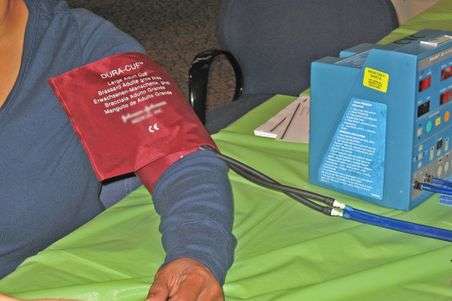Testing child's urine may help doctors identify risk for high blood pressure

Measuring sodium in a child's urine may help doctors identify those at risk for having high blood pressure later in life, according to a study presented at the American Heart Association High Blood Pressure Research Scientific Sessions 2013.
In a small study, researchers used a new protocol to quickly screen 19 children who were 10-19-year-olds. Researchers found that of the eight who retained sodium seven had high blood pressure.
The inability to properly excrete sodium in the body can occur during stress, such as when kids get nervous while in a doctor's office, so the children were asked to provide a urine sample before and after their visit to a physician. Sodium retention increases fluid in the blood vessels, which can impact blood pressure. High blood pressure can develop over time if the body can't properly regulate sodium, and is a serious risk factor for heart disease and stroke.
"Hypertension is no longer an adult disease," said Gregory Harshfield, Ph.D., study senior researcher and director of the Institute of the Georgia Prevention Center at the Medical College of Georgia at Georgia Regents University, Augusta, Ga.
"The results of this test could also provide useful information that could help pediatricians better manage and treat hypertension in their patients," Harshfield said.
More information: For high blood pressure tools and information visit heart.org/hbp.















